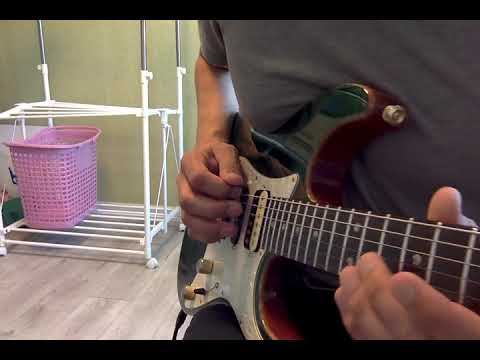My journey’s been a long one, but I’ll try to summarize.
I’ve been playing for about 9yrs (on and off, self-taught) and my weakness has always been consistency; I’d practice hard for a few weeks or months and then take stop for a few weeks or months.
During my first 2yrs, I practice hard and saw the greatest improvements.
I could descend and ascend 120-130bpm 3nps scales once or twice. I was using economy picking until I took a lesson and the teacher switched me to strict alternate picking, which I’ve used since.
From year 2 till about year 5 I practiced very little and probably hit a wall of about 140bpm. I had an issue with relying on the “thumb flexion”, but stopped that and relied as much as I could on the wrist.
About 2-3yrs ago, I devised a routine around stamina (playing comfortable speeds of around 100-110bpm 16ths of licks across 2 strings non-stop for 20, 30, 40 and 60sec rounds) after about 10min I’d switch to the speed rounds, where I’d play at around 150bpm in bursts of about a measure or two. The final speed round, I’d go even quicker with shorter bursts of a 4/4 measure or even a 2/4 measure. I managed to play some clean licks at about 185bpm, but only for a measure, at most. I stopped practicing after a few months.
Now, I’m trying to practice properly until I reach my first goal of being able to tackle 200bpm runs and play comfortably at 180bpm (hopefully I get faster from there).
I’ve analyzed my technique and I seriously can’t find much wrong, my movements are quite economical, I use pickslanting, my arm comes in at about a 10 o’clock angle and I don’t use string hoping. I’m experimenting with my grip, I like holding it between the thumb pad and forefinger nail, but I’m testing moving it back (between the thumb pad and first knuckle) to make the grip a bit more rigid and discourage any thumb flexion.
Right now, I think I just need more practice.
I’ve gone through most of the picking primer and while it has some fascinating information… it’s just too bloated. I have 30min a day to practice and it’ll take me weeks to get through all these videos, time I could actually spend practicing. It doesn’t really suggest how to practice, just shows explains the different techniques. Again, it’s really informative, but want something that’s going to get me practicing straight away.
My biggest issue right now is stamina, I can’t sustain:
150bpm patterns across 2 strings for more than 3-4 measures
160bpm patterns across 2 strings for more than 2 measures
180bpm patterns across 2 strings for more than a measure
all 16th notes
measures are 4/4
Should I be sticking with the stamina and speed routine? My belief is that I’ll gradually begin to feel more relaxed the more I play at these speeds and this I’ll be able to go faster. I’ve been trying Troy’s suggestion of adjusting my technique till I find something that immediately allows me to play above my current speed, but nothing else seems to work particularly as the primer fails to mention how to practice.
This video was taken last year, I was using a metronome at 160bpm wasn’t warmed up properly and it wasn’t a great take, but here it is


